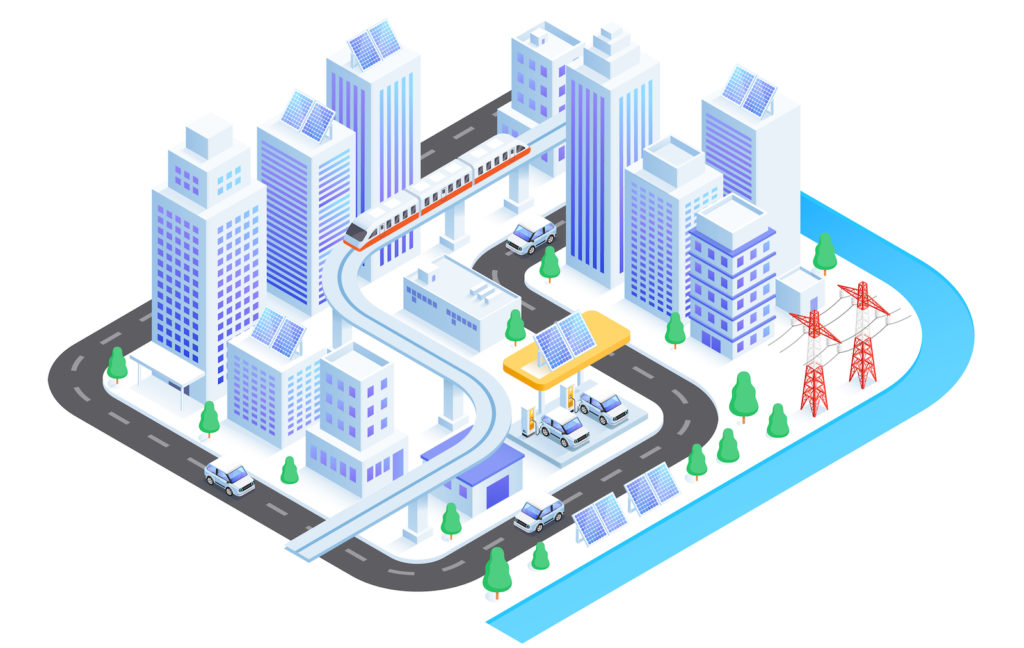Earlier this month the US Department of Energy (DOE) announced a $61 million pilot project that will create 10 highly connected communities across the country. The initiative will transform thousands of homes and workplaces into energy-efficient buildings that can interact with the electrical grid to optimize their energy consumption. While not extraordinary in terms of investment or technology, the project is a positive step towards addressing the building efficiency crisis and shows the commitment of the Biden administration to their June 2021 Grid-interactive Efficient Buildings (GEB) Roadmap.
“From our homes to workplaces, this groundbreaking, grid-connected building technology will help reduce our impact while cutting energy bills, maximizing convenience, and propelling our efforts to reach a carbon-neutral, clean energy economy by 2050,” said U.S. Secretary of Energy Jennifer M. Granholm. “These projects will help universalize technology that can maximize the efficiency and sustainability of America’s nearly 130 million buildings and make significant headway in the fight against climate change.”
The June roadmap included 14 recommendations to better integrate buildings with solar and wind power through the smart operation of electricity demand and storage. Better building-to-grid communication can release new levels of flexibility, choice, and control in smart buildings, thereby finding efficiency around the behaviors and preferences of building operators and occupants. The Whitehouse estimates that national adoption of GEBs would create savings of $100–200 billion across the electric power system and could decrease emissions in the power sector by 6% per year over the next two decades.
“The General Services Administration (GSA) is releasing a blueprint to integrate grid-interactive technologies into federal building renovation and improvement projects, particularly using energy savings, and utility energy savings contracts,” the administration stated alongside the release of the Roadmap in June. “The blueprint puts practical guidance and tools into the hands of building operators to help them integrate GEB technologies into current and future performance contracts.”
At that time the DOE, in coordination with the Department of Housing and Urban Development, had already announced the first 55 commercial, industrial, and multifamily organizations to participate in a Low-Carbon Buildings Pilot program. It also contributed to the Advanced Water Heating Initiative to increase market adoption of high-efficiency, grid-connected heat pump water heaters in residential and commercial buildings. And in May, the DOE launched an Initiative for Better Energy, Emissions, and Equity (E3 Initiative), putting $10M toward accelerating the research and adoption of heat pump technologies.
“The Biden Administration is dedicated to working with the private sector, labor unions, building and homeowners, and manufacturers in the building industry to electrify and modernize new and existing buildings,” a government spokesperson said. “Additionally, the Administration will support city, state, and tribal governments through expanded partnerships to develop new tools and resources to make buildings more energy-efficient, affordable, and healthy.”

This month’s announcement takes Biden’s plan a step further by creating connected communities of GEBs. Each uses a range of smart controls, sensors, and analytics to communicate with the electrical grid, in order to optimize demand against peak demand trends. DOE research estimates that by 2030, GEBs could save up to $18 billion per year in power system costs and cut 80 million tons of carbon emissions each year —more than the annual emissions of 50 coal plants or 17 million cars. The initial two connected community projects, in Alabama and Georgia, have already demonstrated huge potential by using approximately 42-44% less energy than today’s average all-electric home.
“Lowering energy bills through energy efficiency and energy efficient systems is the best way to lower our carbon emissions and lower costs for businesses, renters, and homeowners," said US Representative Mike Doyle. "Developing new technologies to create connected communities that more efficiently move energy around is the type of innovation needed to build an affordable and cleaner energy system for the future, and I am pleased to see an organization from Pittsburgh leading a project at the forefront of this innovation.”
The diversity of the 10 selected programs indicates the broad potential of the initiative. From the Electric Power Research Institute (EPRI) transforming multi-family buildings within New York, Seattle, and San Diego’s affordable housing developments, to the Post Road Foundation investigating a Transactive Energy Service System to harmonize communications and optimize energy use among the distributed energy resources, local energy markets, and buildings of rural communities in New Hampshire and Maine. And from the Slipstream Group converting facilities in Wisconsin into GEBs that connect with nearby electric vehicle charging stations to establish a scalable business model for utilities, to the Ohio State University’s connected campus community testing grid-interactive technologies in a cyber-secure environment.
“The President recognizes the opportunity that retrofitting and modernizing our nation’s existing buildings presents, which is why his [broader] American Jobs Plan promises to build, rehabilitate, and retrofit more than two million homes across the country while also improving our nation’s federal facilities,” reads a statement from the Whitehouse. “This effort will create new domestic manufacturing opportunities for electric heating and cooling technology, invest in research and development to spur smart building advances, and forge collaborations that will enable buildings to be powered by clean electricity.”



